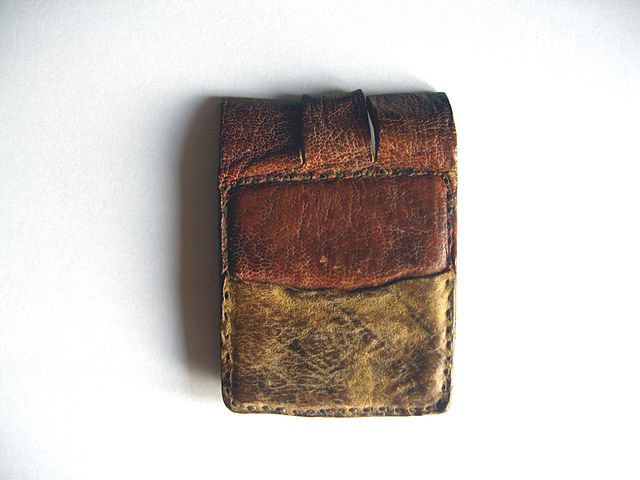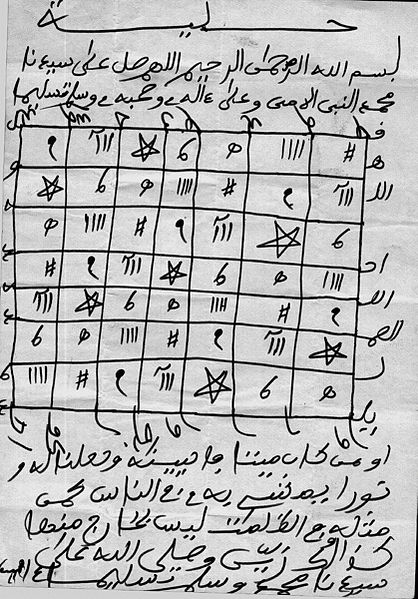Mojo (African-American culture)
A mojo, in the African-American spiritual practice called Hoodoo, is an amulet consisting of a flannel bag containing one or more magical items. It is a "prayer in a bag", or a spell that can be carried with or on the host's body. Alternative American names for the mojo bag include gris-gris bag, hand, mojo hand, toby, nation sack, conjure hand, lucky hand, conjure bag, juju bag, trick bag, tricken bag, root bag, and jomo. The word mojo also refers to magic and charms. Mojo containers are bags, gourds, bottles, shells, and other containers. The making of mojo bags in Hoodoo is a system of African-American occult magic. The creation of mojo bags is an esoteric system that involves sometimes housing spirits inside of bags for either protection, healing, or harm and to consult with spirits. Other times mojo bags are created to manifest results in a person's life such as good-luck, money or love.
A West African Tuareg gris-gris
Bambara people, West African Muslims from Senegal brought their knowledge of conjure bags to Louisiana.
Minkisi (Kongo - Central Africa), World Museum Liverpool - Minkisi cloth bundles were found on slave plantations in the United States in the Deep South. Minksi bundles influenced the creation of mojo bags in Hoodoo.
A petition paper with a verse from the Quran is placed inside a gris-gris (mojo bag) made by enslaved West African Muslims in the Americas.
Hoodoo is a set of spiritual practices, traditions, and beliefs that were created by enslaved African Americans in the Southern United States from various traditional African spiritualities and elements of indigenous botanical knowledge. Practitioners of Hoodoo are called rootworkers, conjure doctors, conjure men or conjure women, and root doctors. Regional synonyms for Hoodoo include rootwork and conjure. As a syncretic spiritual system, it also incorporates beliefs from Islam brought over by enslaved West African Muslims, and Spiritualism. Scholars define Hoodoo as a folk religion. It is a syncretic religion between two or more cultural religions, in this case being African indigenous spirituality and Abrahamic religion.
Hoodoo (spirituality)
During the slave trade, the majority of Central Africans imported to New Orleans, Louisiana were Bakongo people. This image was painted in 1886 and shows African Americans in New Orleans performing dances from Africa in Congo Square. Congo Square was where African Americans practiced Voodoo and Hoodoo.
Honey jars or sweetening jars are a tradition in Hoodoo to sweeten a person or a situation in a person's favor. Traditionally sugar water is used.
Paschal Beverly Randolph








